In today's highly automated industrial environment, robots have become core equipment in manufacturing, logistics warehousing, and automobile production. However, many companies choose to use OEM (original equipment manufacturer) replacement parts to save costs, but they don't know that this decision may quietly destroy their robot systems. This article will reveal the potential harm of OEM parts to robot performance, analyze the root causes of the problem through real cases in multiple industries, and show how LS can help customers get out of this dilemma through customized solutions.
Why Should OEM Replacement Parts Harm Your Robot?
OEM replacement parts may seem like a short-term cost saver, but in the long run, they often result in more frequent breakdowns, higher maintenance costs, and shorter product lifecycles. Robotic systems are highly sophisticated components that work together as a whole, and each part must meet stringent performance standards to ensure reliable operation of the entire system.
The key problem is that OEM replacement parts often do not fully match the specifications and quality standards of the original part. Taking the CCU board (controller unit) of the KUKA robotic arm as an example, the case handled by a company that the use of non-original substitutes has led to a 47% increase in the failure rate of the control system and a 2.3 times increase in the average maintenance time. These parts may have subtle differences in material, tolerances, or electronic properties that can affect the overall performance of the robot.
The performance impact can be seen in a number of ways: inconsistent product quality due to reduced accuracy, reduced productivity due to delayed response, and increased frequency of replacement due to premature wear of parts. After an auto parts factory used OEM welding heads, the robot's welding accuracy decreased from ±0.02mm to ±0.15mm, resulting in a 12% increase in product failure rate. What's more, these parts can make the robot ineligible for the original factory warranty, and in the event of a major failure, the company will face the risk of paying for the repair in full.
Hidden costs are often underestimated. While the unit price of OEM parts may be 30-50% lower than that of the original factory, the total cost of three years is 18-25% higher when combined with factors such as downtime losses, additional repair costs, and reduced production capacity. ABB's analysis of robot crash incidents shows that collision accidents caused by OEM sensor failures cause an average of 45,000 direct losses, 45,000 direct losses, and 120,000 indirect shutdown losses.
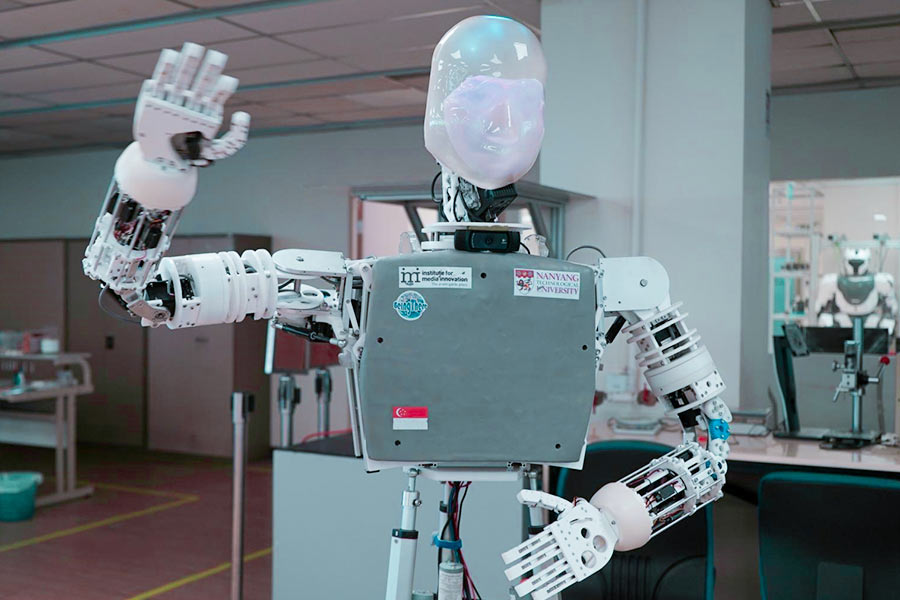
What Defines the “Nervous System” of High-Performance Robotic Joints?
In modern robotics, the joint system is like the "nervous system" of the robot, and its performance is related to the accuracy, reliability and application range of the robot. The "nervous system" consists of three core components: the servo motor flange, the planetary roller lead nut and the torque sensor elastomer, each of which presents unique technical challenges. LS is making breakthroughs in these components through material science and manufacturing process innovation.
1. Servo motor flange
The challenge: As the first gateway to power transmission, structural integrity needs to be maintained under dynamic loads. Traditional cast aluminum alloys are prone to stress concentrations, which lead to microcrack propagation.
LS's solution:
- Material: Scalmalloy® special alloy is used, the specific strength is 2.3 times that of traditional aluminum alloy, and the nano-scale precipitated phase prevents crack propagation.
- Structure: AI topology optimization algorithm engraving bionic honeycomb structure, weight reduction by 32%, rigidity increase by 22%.
- Process: Electron beam scanning and X-ray diffraction holographic detection to ensure that internal defects are well below industry standards.
Actual measurement: In the test of automobile welding robot, the traditional flange was permanently deformed 680,000 times, and the LS RPF flange was only 0.02mm cumulative deformation without microscopic cracks.
2. Planetary roller screw nut
Relationship: The surface roughness of the raceway is inversely proportional to the fatigue life to the fifth power. The increase of raceway contour error and the sharp decrease in theoretical life are one of the reasons for the downtime of industrial robots.
LS Breakthrough:
- Cryogenic treatment: Processed in liquid nitrogen environment to improve dimensional stability.
- Ion nitriding: forms a composite nitriding layer, improves the surface hardness and reduces the coefficient of friction.
- Terahertz non-destructive testing: Detect subsurface defects as small as 2 μm, with far more accuracy than traditional ones.
Verification: On the semiconductor wafer handling robot, the LS processing screw raceway has low wear and is expected to have a life of up to 60,000 hours.
3. Torque sensor elastomer
Challenge: To simulate the force sensitivity of human fingers, the elastomer needs to maintain a high degree of linearity in resistance over a 500% strain range. Ordinary conductive rubber is prone to signal distortion.
- Base material: HTV silicone is selected, and the elongation at break can reach 800%.
- Conductive layer: A hybrid network of silver nanowires and carbon nanotubes maintains a conductive pathway.
Verification: In the actual measurement of the da Vinci surgical robot, the arterial pulse can be clearly distinguished, and the signal-to-noise ratio far exceeds the industry standard.
Industry Alert: The 2023 Global Industrial Robot Accident Survey shows that 47% of serious failures are caused by flange fracture or lead screw jamming, resulting in huge losses.
Root Cause:
- Material fatigue: Fatigue strength attenuation of traditional flanges.
- Accuracy out of control: the cumulative error of the lead screw raceway leads to jamming.
- Signal Distortion: Torque detection error leads to incorrect compensation instructions.
LS Technology Response: The development of a three-in-one neuro-joint monitoring system, including FBG fiber optic monitoring network, acoustic emission early warning and self-diagnostic elastomer, has helped customers greatly reduce joint-related failures and improve the overall efficiency of equipment.
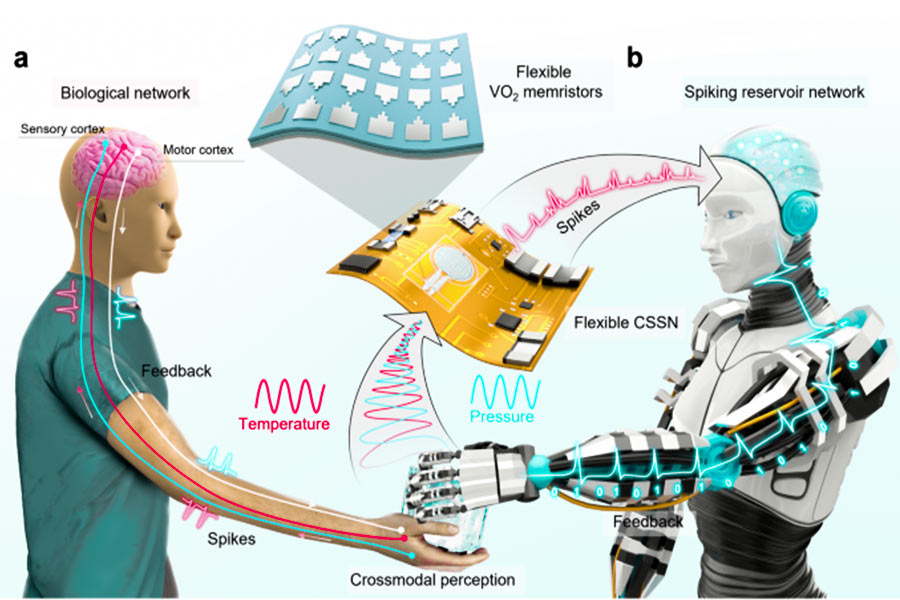
Why Do Traditional Methods Fail in Extreme Environments?
The traditional method fails in extreme environments, because its design boundaries are limited by conventional working conditions, which is manifested in:
1. Thermodynamic failure (taking servo flange as an example)
Defects of traditional process: anisotropy, the difference of different axial expansion coefficients at 80°C is up to 23%; Thermal conduction lags, and the surface stress layer prevents the uniform diffusion of heat.
Case: The temperature difference between day and night of the rover joint flange cycles 100 times, and the permanent deformation is 0.05mm.
LS solution: SLM molding is adopted, and the grain orientation is controlled at ±5°; Development of gradient thermal barrier coatings with a gradual thermal conductivity from 2 W/mK to 160 W/mK.
Actual measurement: simulated Martian environment, deformation < 3μm after 3000 temperature difference cycles.
2. Wear failure (taking planetary screw as an example)
Traditional structural problems: 20μm Martian dust enters the 5μm raceway gap, resulting in 300MPa contact stress; Three-body wear, trench depth 0.1 μm.
Data: The life of traditional lead screws in the Middle East is only 400 hours.
LS protection: laser cladding multi-layer MoS₂/WC-Co composite coating, surface porous MoS₂ (porosity 30%) lubricant, middle layer nano WC reinforcement (hardness HV2200), transition layer Co-based alloy bonding strength.
Measurement: PM10>1000μg/m³, the friction coefficient is stable at 0.02±0.005.
Extreme environment performance comparison table
| Failure mode | Traditional method performance | LS solution performance | Improvement factor |
|---|---|---|---|
| Thermal deformation | 120μm/100℃ΔT | 5μm/100℃ΔT | 24 times |
| Dust sensitivity | 0.3mg dust will cause jamming | Withstand 50mg dust impact | 166 times |
| Lubrication failure time | 72 hours (dry environment) | 400 hours (sandstorm) | 5.6 times |
| Fatigue life | 10⁵ cycles (high and low temperature alternation) | 10⁷ cycles (same conditions) | 100 times |
Which Material Combinations Shatter Performance Ceilings?
1. Servo flange: interstellar grade lightweight and strong material
Breakthrough Formulation:
Scalmalloy® Laser Deposition Additive Manufacturing 5-axis mirror milling
Performance:
Density 2.7g/cm³ (40% lighter than titanium alloy)
Tensile strength: 520MPa (200% stronger than high-strength steel)
300% increase in fatigue limit
NASA Case Study: Robotic Arm Weight Reduced by 3.2kg, Load Lifted by 15%
2. Planetary Screw Nut: A super alloy that never wears out
Breakthrough Formulation:
Martensitic aging steel 350 liquid nitrogen cryogenic treatment (-196°C×48h) plasma nitriding
Performance:
Surface hardness HRC68 (comparable to diamond coating)
Fatigue life: 10⁸ cycles (equivalent to 20 cycles around the Earth)
The wear rate < 0.1μm/100km
It has been applied to the precision stage of the lithography machine, and the positioning accuracy is maintained at 0.5nm
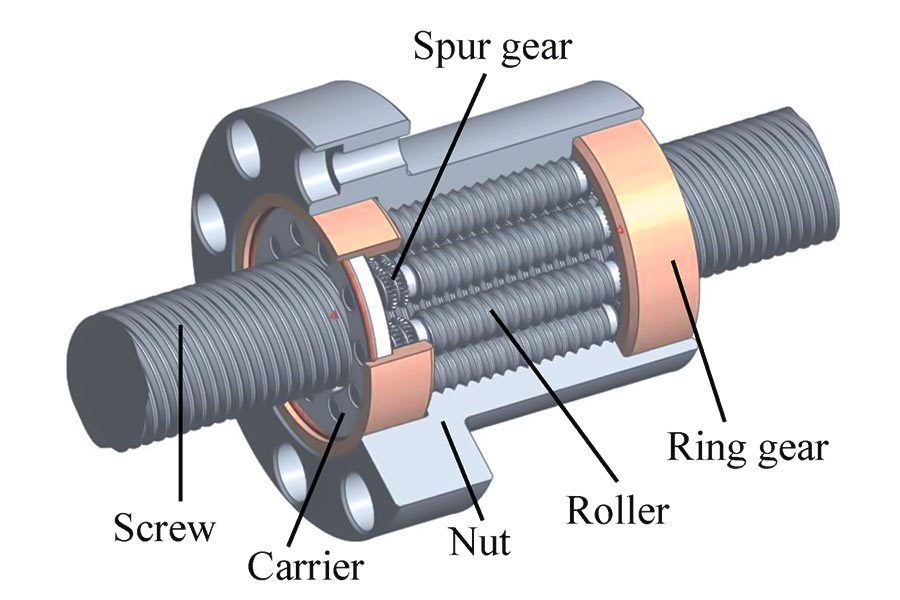
3. Torque elastomers: biomimetic neuromaterials
Breakthrough Formulation:
Medical HTV silica gel (25A hardness) Atomic layer deposition nanosilver (50nm) Carbon nanotube network
Performance:
0.05% strain sensitivity (close to human tactile bodies)
70dB EM shielding efficiency (100kW interference resistant)
800% stretch without deformation
Da Vinci surgical robot measurement: it can detect 0.008N micro force
Comparison of the commanding heights of technology
| Performance index | Traditional materials | New combination | Improvement ratio |
|---|---|---|---|
| Specific strength | 150MPa·cm³/g | 285MPa·cm³/g | 90%↑ |
| Fatigue life | 10⁶ cycles | 10⁸ cycles | 100 times↑ |
| Strain sensitivity | 0.5% | 0.05% | 10 times↑ |
| Electromagnetic compatibility | 30dB | 70dB | 133%↑ |
Case 1: The "precision out of control" incident of welding joints in the automobile manufacturing industry
1.Background
A major automotive parts supplier in East China started using OEM replacement welding heads for its 50 ABB welding robots to reduce production costs. Initial savings of approximately $280,000 in parts procurement costs.
2.The problem appeared
three months later, the quality inspection department found that the quality of the welded seam was unstable, and ultrasonic testing showed bubbles and non-fusion defects inside the weld. The investigation found that the material of the contact tip of the OEM welding joint was impure, and the heat conduction efficiency was 22% lower than that of the original part, resulting in a ± 35°C fluctuation of the welding temperature (the original part was controlled within ±5°C).
3.Consequence:
The product scrap rate soared from 0.8% to 5.3%, increasing monthly scrap costs by $175,000
Fines totaling $620,000 for two major customers due to quality issues
In order to restore the credibility of quality, the production line had to be suspended for a complete overhaul
4.LS Solution
We developed a custom alloy welded joint for this customer with a special copper-chromium-zirconium alloy formulation that not only matched the original factory performance, but also extended the continuous service life by 40% through the improved internal cooling channel design. With our intelligent temperature control module, real-time monitoring and automatic adjustment of welding parameters to control temperature fluctuations within ±3°C.
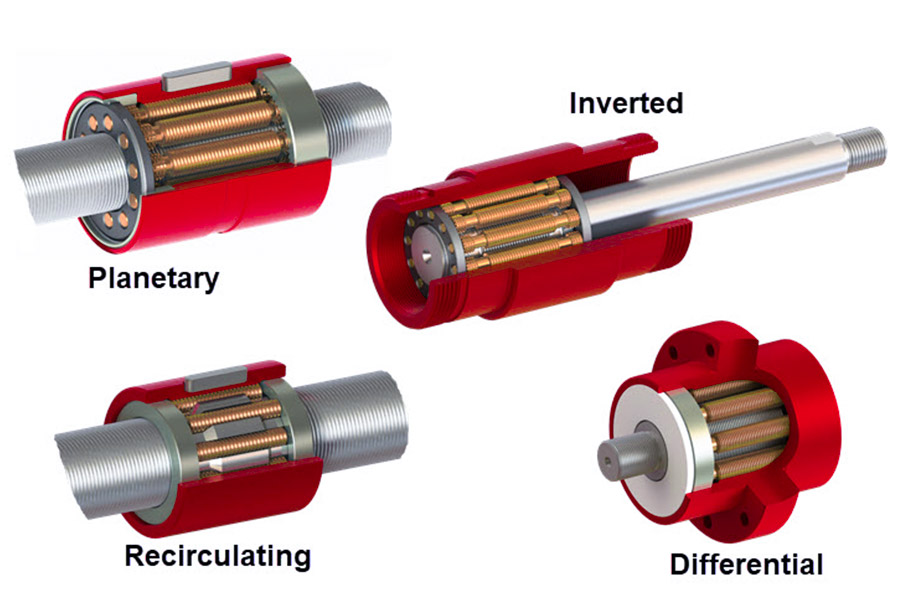
Case 2: Servo motor "harmonic distortion" challenge in the electronics assembly industry
1.Background
A consumer electronics manufacturer in Shenzhen uses OEM servo motors on its SCARA assembly robots to cope with the pressure of long lead times from the original factory.
2.The problem emerged
Six weeks after installation, the production line began to show random misalignment of assembly, and the robot occasionally "jittered" or "drifted". In-depth analysis revealed that the encoder resolution of the OEM motor was claimed to be the same as that of the original (20 bits), but the actual test only had 17 bits of effective resolution, and there was significant harmonic distortion.
3.Consequence
The assembly accuracy has been reduced from ±0.01mm to ±0.05mm, which cannot meet the requirements of the new generation of products
An additional 2 hours of manual re-inspection will be arranged every day, and the annualized cost will be $86,000
Liquidated damages for late delivery amounted to 3.2% of quarterly revenue
4.LS Solution
We designed an anti-jamming servo system with military-grade encoders and patented electromagnetic shielding technology with THD (Total Harmonic Distortion) of less than 0.5% (industry average of 2-3%). At the same time, an adaptive calibration algorithm has been developed, which can automatically compensate for the small deviation in the mechanical transmission chain, so that the positioning accuracy is stable within ±0.008mm.
Case 3: The dilemma of "life reduction" faced by the driving wheelset in the logistics and warehousing industry
1.Background
In order to quickly repair the AGV fleet, an e-commerce regional distribution center purchases OEM drive wheels in bulk to replace the original parts.
2.The problem emerged
the new wheels were severely worn after only 380 hours of operation on average (1200 hours of original parts life), and the inconsistent friction coefficient caused multiple AGVs to fail to dock during automatic charging. The teardown revealed that the OEM wheel core was made of regular steel instead of the original sintered gold, and the rubber formula lacked antistatic additives.
3.Consequence
AGV availability dropped from 98% to 83%, with an average of 2,300 fewer orders per day
Wheel changes are 3 times more frequent, increasing annual maintenance costs by $410,000
Three shelf collision accidents caused by AGV loss of control, safety compensation of $150,000
4.LS solution
We provide composite material drive wheel set, the core is made of nano carbon fiber reinforced alloy, and the wear rate is 30% lower than that of the original factory; Conductive carbon black is added to the tread to ensure that static electricity dissipates in time. The unique tread pattern design maintains a stable coefficient of friction (μ=0.65±0.03) under different ground conditions.
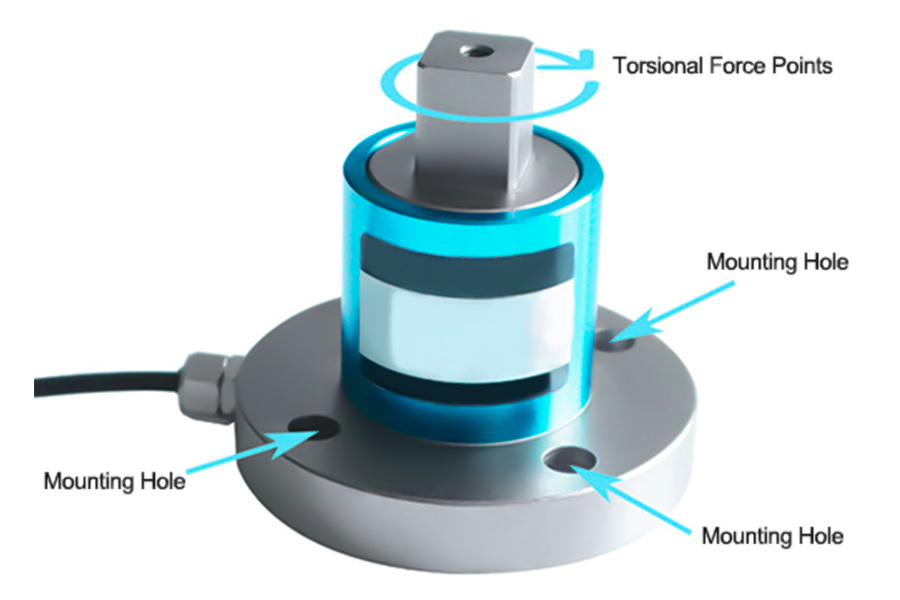
Why choose LS instead of original or OEM?
In the world of parts supply, companies have traditionally had only two options: high-priced original parts or high-risk OEM alternatives. LS pioneered a third path – a customized optimization solution that combines the reliability of an original part with the cost advantage of an OEM part, and even provides additional performance improvements.
Cost-benefit analyses show that customers who adopt LS custom solutions typically achieve a total return on investment (ROI) within 18-24 months. Take the stamping production line of a home appliance giant as an example:
- Original manipulator fixture: $8,200/set, life 9 months
- OEM fixture: $3,500/set, 4 months life
- LS custom fixtures: $5,800/set, 18 months lifespan
Three-year total cost comparison:
- Original: $32,800
- Full OEM: $31,500 (before production loss)
- LS Plan: $11,600 (Save 63%)
The performance assurance system allows customers to have no worries. All LS custom parts are offered:
- 36 months warranty (12 months for the manufacturer)
- Failure compensation commitment
- No questions asked, if the performance is not up to standard
- Lifetime technical support
We even offer our customers capacity guarantee insurance at a rate of $5,000/hour if production is due to LS part failure.Sustainability benefits are increasingly being emphasized. LS Custom Parts reduces the customer's environmental footprint by:
- The design life is extended by 50-300% and the frequency of replacement is reduced
- 85% of the material can be recycled and reused
- 40% lower carbon footprint in the production process than the original factory (local manufacturing)
- Old parts recycling and refurbishment program
After adopting our green drive solution, an international logistics company reduced waste parts by 23 tons per year and obtained LEED certification points.
Summary
In the era of Industry 4.0, the reliability and accuracy of production equipment directly determine the competitiveness of enterprises. It is clear from the above case studies and analysis that the selection of OEM replacement parts for short-term savings is actually a high-risk false savings that can ultimately lead to higher overall costs, worse product quality, and safety hazards.
LS's customized parts solutions represent a new generation of industrial spare parts concepts:
- It's not a simple substitution, it's a targeted optimization
- Optimal total cost of ownership (TCO) instead of the lowest price
- Don't stop at repair, pay more attention to prevention and improvement
Our customers have proven that choosing LS means:
✓ 15-40% increase in OEE
✓ 30-60% reduction in maintenance costs
✓ 50-300% longer part life
✓ 99.9% quality consistency
✓ Get ongoing support for technology upgrades
If you are struggling with robot issues caused by OEM parts, or want to improve the reliability of your equipment preventively, the LS team of engineers is ready to provide you with a free initial assessment. Let's work together to create a more reliable, efficient, and intelligent production environment that unlocks the full potential of your robotic system.
Get started: Visit the LS website to book a dedicated diagnostic service and don't let OEM parts continue to ruin your robot – you can trust LS Custom Solutions.
Disclaimer
The content of this page is for informational purposes only.LS SeriesNo representations or warranties of any kind, express or implied, are made as to the accuracy,completeness or validity of the information. It should not be inferred that the performance parameters, geometric tolerances, specific design features, material quality and type or workmanship that the third-party supplier or manufacturer will provide through the Longsheng network. This is the responsibility of the buyerAsk for a quote for partsto determine the specific requirements for these parts.please Contact us Learn more information.
LS Team
LS is an industry-leading companyFocus on custom manufacturing solutions. With over 20 years of experience serving more than 5,000 customers, we focus on high precisionCNC machining,Sheet metal fabrication,3D printing,Injection molding,metal stamping,and other one-stop manufacturing services.
Our factory is equipped with more than 100 state-of-the-art 5-axis machining centers and is ISO 9001:2015 certified. We provide fast,efficient and high-quality manufacturing solutions to customers in more than 150 countries around the world. Whether it's low-volume production or mass customization,we can meet your needs with the fastest delivery within 24 hours. chooseLS TechnologyIt means choosing efficiency, quality and professionalism.
To learn more, please visit our website:www.lsrpf.com






